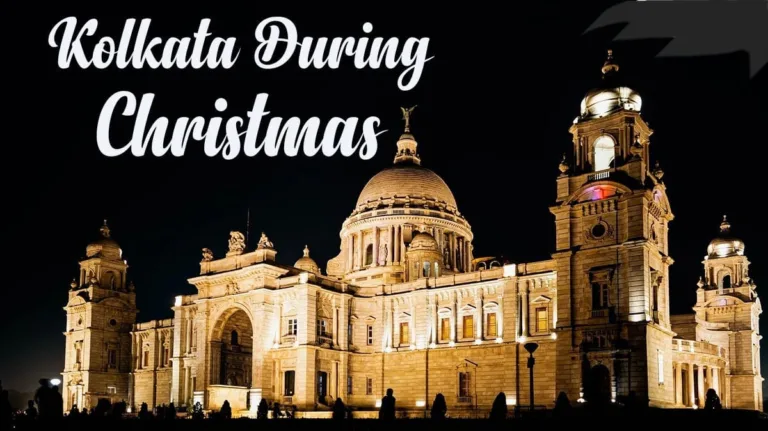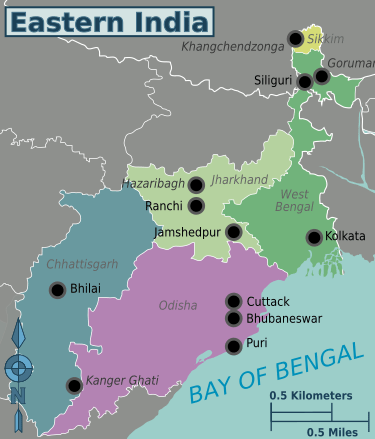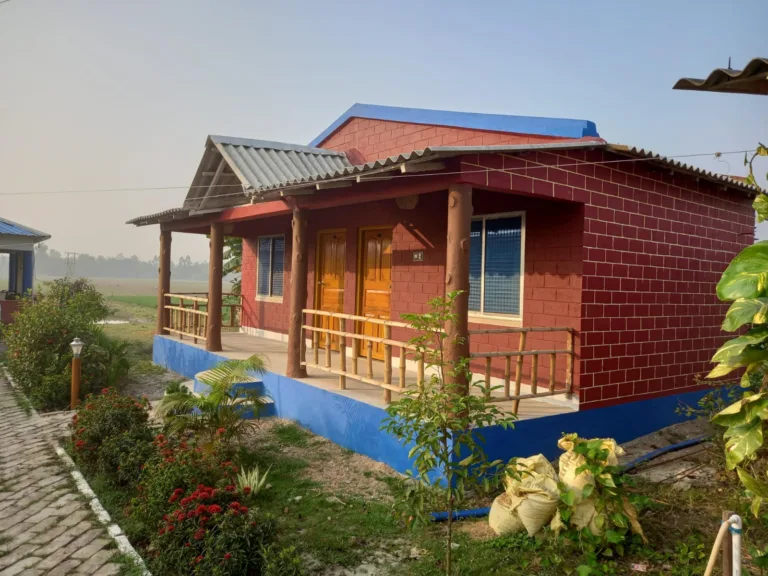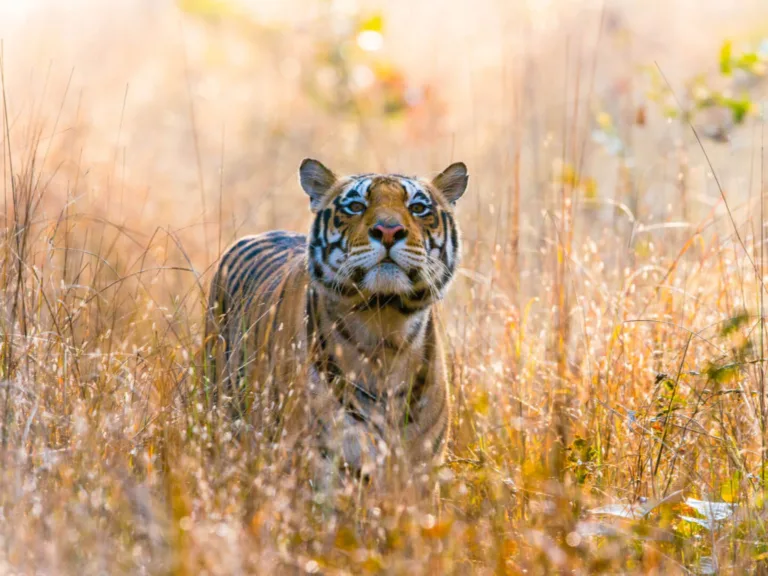Tourist Places Near Burdwan, Katwa & Birbhum
Burdwan, kATWA & Birbhum Places of Interest
Bakreshwar (Birbhum- 230 km. from kolkata)
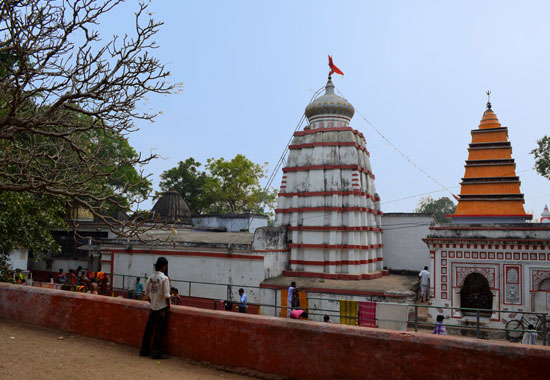
Bakreshwar, situated in the Suri Sadar subdivision of Birbhum district in West Bengal, India, is a tranquil town known for its serene ambiance. A notable feature of this locale is the renowned hot spring, a must-visit attraction. The region boasts several hot springs, each with temperatures ranging from 42 to 65 degrees Celsius, each with its unique name. Adjacent to one of these hot springs stands a temple dedicated to Lord Shiva, with additional temples scattered throughout the area, adding to the cultural and spiritual charm of Bakreshwar.
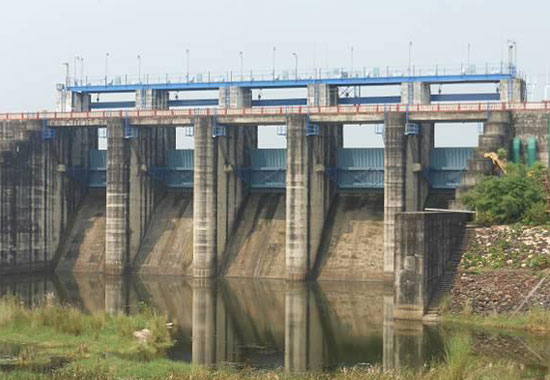
Explore Massanjore if you have additional time, as it is situated just 40 km away from Shiuri. Convenient transportation options such as bus services and car rentals make it easy for tourists to reach Massanjore and Bakreshwar Dam.
For the best experience, consider visiting Bakreshwar during the monsoon, winter, or spring seasons, although the destination is welcoming to tourists year-round.
Ballavpur Wildlife Sanctuary (Birbhum- 172 km. from kolkata)
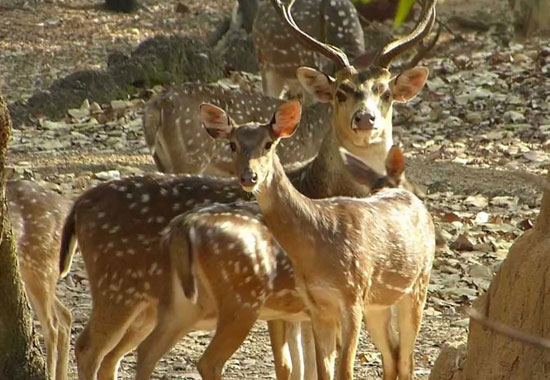
Established in 1977, the Ballabhpur Wildlife Sanctuary, commonly known as Deer Park, is situated in the Bolpur subdivision of Birbhum District, near Santiniketan in the Indian state of West Bengal.The sanctuary offers a serene wooded environment, providing visitors with opportunities for birdwatching and wildlife observation. Stroll along well-maintained jungle paths to witness blackbucks and spotted deer in their natural habitat. Early morning visits to the watch towers near the tanks (Jheels) provide an excellent chance for birdwatching. Nature enthusiasts can indulge in leisurely nature walks, immersing themselves in the sanctuary’s natural beauty.
For those interested in cultural experiences, the eastern fringes of the sanctuary host a few tribal villages where visitors can explore and understand village life. Additionally, the region offers sightseeing opportunities in popular destinations such as Shantiniketan, Kopai, Khowai, Sonajhuri, and Kankalitala, enhancing the overall experience for nature and culture enthusiasts alike.
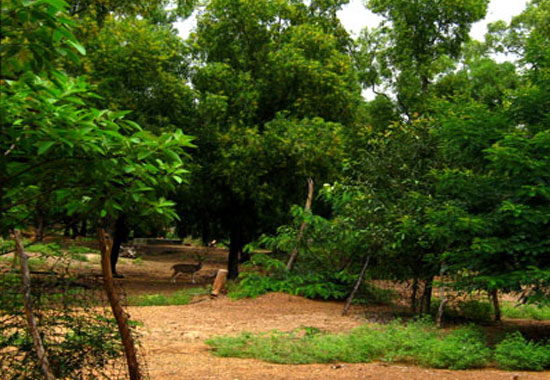
Attractions abound at the Ballavpur Wildlife Sanctuary, where the focal points are the captivating blackbuck deer and spotted deer. Three expansive water bodies create a vast wetland habitat, attracting a multitude of migratory birds during winter, including Lesser Whistlings, Pintails, Teals, and more. The sanctuary is also a haven for resident bird species such as Black Hooded Orioles, White Bellied Treepies, Cormorants, Hoopoes, and Egrets.
For an enchanting experience, consider visiting during the rainy season when the sanctuary is transformed into a lush green haven, adorned with new leaves on every branch. The deer, particularly, revel in the rains, spending their days in joyful soaking. Alternatively, the winter months witness the sanctuary teeming with thousands of migratory birds, nesting in the water bodies and marshlands of Ballavpur Wildlife Sanctuary.
Beloon Eco Village (Burdwan- 175 km. from kolkata)

Nestled in Bardhaman District, a mere 175 kilometers from the bustling city of Kolkata, lies the serene Belun Eco Village.
Here, one can leisurely stroll through verdant grasslands, tracing the meandering course of the Shibai River, where migratory and local birds engage in a lively display throughout the day. For a charming village experience, hop onto a traditional bullock cart and explore the entire expanse, plucking garden-fresh vegetables and fruits directly from the farm to savor their natural flavors. However, the pinnacle of tranquility awaits when you simply sit back and observe the graceful passage of boats across the Shibai River, immersing yourself in the serene ambiance of Belun Eco Village.
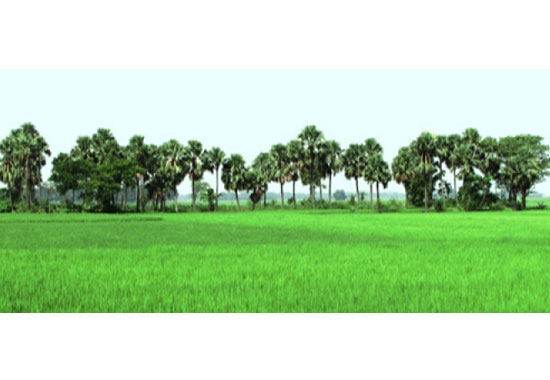
Belun Eco Village boasts proximity to Choto Pukur, a vibrant wetland frequented by diverse wildlife and migratory birds such as the White-throated Kingfisher, Bramhiny Duck, Ruddy Shelduck, and Wooly-necked stork. Just a short 15 km journey from Beloon leads to Attahas, renowned as one of the “Satipith” pilgrimage sites for Hindus.
A mere 20 km away lies Nayachar, an island nestled in the Ganges River, where a variety of wildlife species and migratory birds find sanctuary. Notably, the village of Musharu within Nayachar is famed for its reverence toward venomous cobras, worshipped as deities, earning it the intriguing moniker of Snake Village.
Regardless of the specific interests of tourists, Belun can be enjoyed year-round, offering a range of activities to suit every season.
Bhalki Machan (Burdwan- 135 km. from kolkata)

Bhalki Machan’s primary allure lies in its expansive artificial lake surrounded by thick vegetation. A fascinating historical note reveals that this site once served as the game reserve for the former Zamindars. These landlords constructed watchtowers, known as “machans,” on one side of the water body, employing bows, arrows, and guns for wild animal hunting. This intriguing history has bestowed the location with its distinctive name, Bhalki Machan.
As you traverse the forest path, you’ll encounter the remnants of an ancient watchtower, believed to have been erected by the Zamindars of yore. Legend has it that beneath this watchtower lies a far-reaching tunnel. While a partially filled hole at the site suggests the possibility, no definitive conclusion can be drawn. Nevertheless, the enchanting tales surrounding Bhalki Machan are sure to enhance your holiday experience, adding a layer of mystery and fascination to your visit.
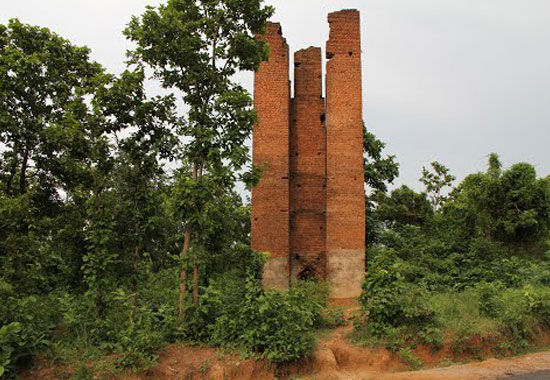
Nearby attractions:Shantiniketan, Bolpur, Deul, Durgapur and Bardhaman are the nearby attractions of Bhalki Machan.
Best visit time: The site invites the tourist throughout the year.
Bubahat Neelkuthi (Birbhum- 290 km. from kolkata)

Bubahat Neelkuthi, nestled in the Birbhum District, stands as a captivating haven, evoking the essence of W. B. Yeats’ “Land of Hearts Desire.” This mystical retreat, set against a serene landscape, beckons visitors to escape the monotony of everyday life and immerse themselves in its picturesque charm. The village resort exudes a rustic ambience, adorned with an unconventional beauty that entices and captivates. It serves as an ideal sanctuary for those seeking a joyous reprieve from the mundane struggles of mortal existence, offering a perfect setting for a rejuvenating weekend getaway. Upon entering, one is greeted with awe-inspiring sights—an enchanting compilation of budding flowers and orchids sprawls across the area, creating a breathtaking panorama. The rustic streets leading to village alleys and undiscovered destinations are a mere minute’s walk away, inviting exploration and curiosity.
The allure of Bubahat Neelkuthi is further enhanced by the mesmerizing spectacle of sunrise and sunset, particularly along the Ajoy River and the renowned Lakshmi Shayar Lake. These moments become indelible images, etching themselves into the memories of those fortunate enough to witness the natural beauty that unfolds at this unique parish resort.
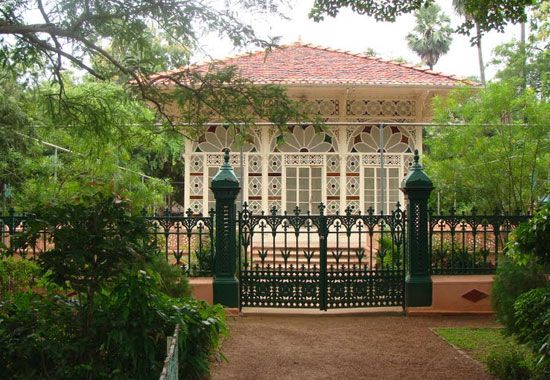
Nearby attractions: Bolpur, Shantiniketan, Durgapur, Deul and Bhalki Machan are some of the nearby attractions which you can visit within a couple of hours driving.
Best visit time:This village resort at Bubahat Neelkuthi welcomes tourist throughout the year.
Deul Park (Burdwan – 165 km. from kolkata)
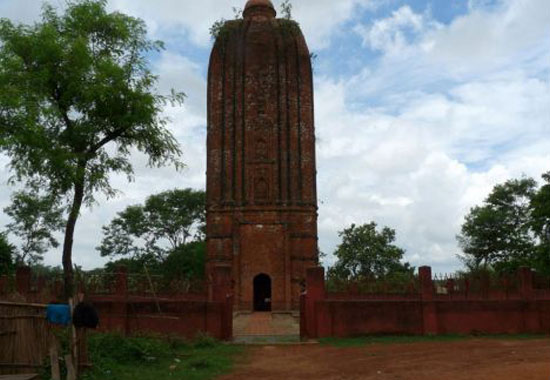
Nestled along the banks of the Ajoy River, Deul Park stands as a cherished gem, attributed to the renowned Gopraj Ishwar Ghosh, affectionately known as Ichai Ghosh in the local community. This destination is celebrated for its picturesque landscape, creating an ideal setting for a weekend retreat beside the meandering Ajoy River.
The lush Garh forest in Durgapur forms a captivating backdrop to the winding Ajoy River, providing a visual spectacle for visitors. The region is often visited by herds of elephants from the nearby Birbhum area, adding a touch of wildlife to the scenery. Across the river lies the site of the Kenduli Mela, drawing hundreds of Bauls during the fair. Kenduli, the birthplace of the renowned poet Jaidev, boasts ancient terracotta temples dedicated to Radha Madhav. Exploring the Garh jungle and the historical battleground where Icchai Ghosh faced defeat in a war against Lausen adds an adventurous element to your trip, featuring a towering brick structure and a weathered temple.
A short distance from Deul Park, the Maa Shyamarupa Mandir beckons, located 4 km from Deul Park and 3.5 km from Muchipara-Shibpur Road. This terracotta temple, constructed over a millennium ago, shelters a 10-armed idol of Shyamarupa carved from marble stone, enriching the cultural and historical tapestry of the region.
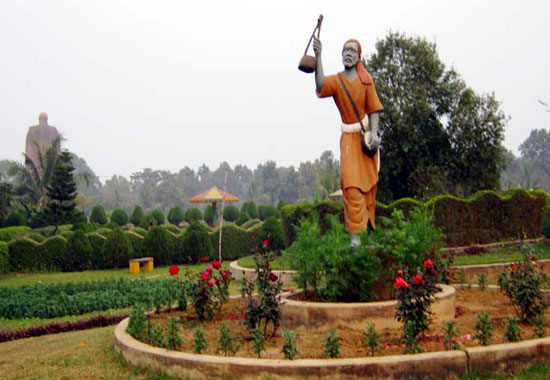
Nearby attractions: You can also visit Shantiniketan, Bhalki Machan, Bolpur within a couple of hours from Deul Park by car.
Best visit time: Deul Park is suitable to visit all the year round, though it is better to avoid the monsoon.
Purbasthali (Burdwan – 120 km. from kolkata)
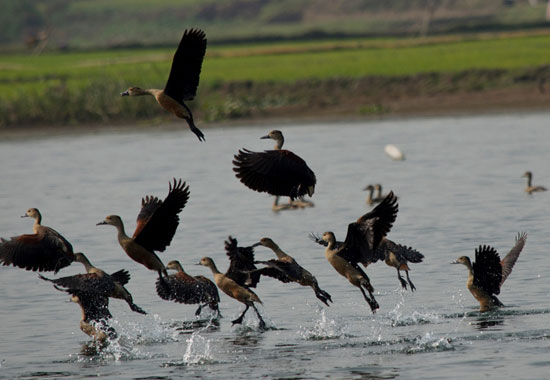
Purbasthali, also known as Chupi Char, is a village in the Kalna subdivision of Bardhaman district, situated 120 km north of Kolkata. Nestled along the banks of a sizable oxbow lake formed by the Ganges river, this region is merely 8 km away from the ancient and sacred town of Nabadwip. Spanning 2–3 km in length, the lake serves as a magnet for both migrants and water birds.
Purbasthali comprises a substantial block encompassing numerous villages adjacent to the expansive oxbow lake, created by the western bank of the Ganges river in the Burdwan district of West Bengal. Notably, the area is characterized by a relatively high level of arsenic in its groundwater. Positioned near the Tropic of Cancer, Purbasthali extends across the geographical coordinates of 88° 19′ 45″ to 88° 22′ E longitude and 23° 26′ to 23° 26’45” N latitude. To the east, across the river, lies the historic town of Nabadwip.
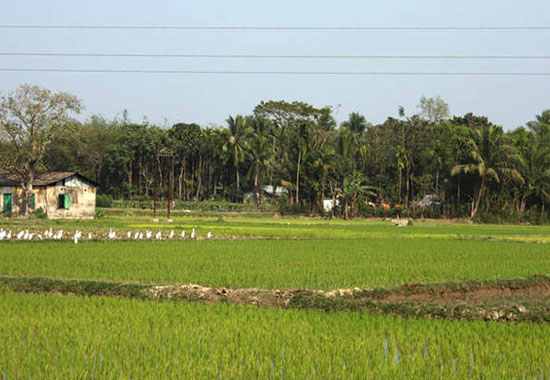
Nearby attractions: There are some places of attractions like Nabadwip, Krishnanagar and Mayapur located nearby.
Best visit time: The best time to visit the place is during the winter months of October to February.
Rasulpur (Burdwan – 96 km. from kolkata)
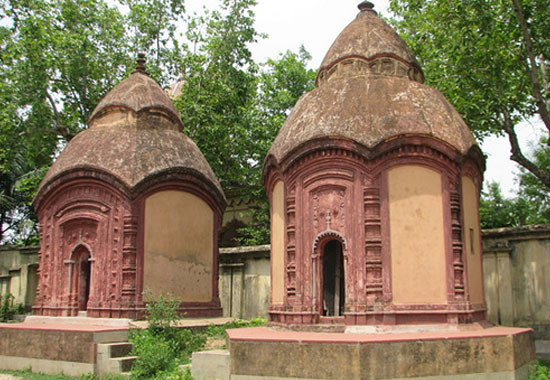
Rasulpur Park, a mere 90-minute car journey from Kolkata, beckons nature enthusiasts to indulge in weekend retreats within the serene ambiance of six cottages or deluxe rooms, each nestled amidst lush greenery and offering picturesque views of the park’s largest lake. The Nature Park stands as the focal point of the region, boasting seven lakes scattered across its expanse. Within its confines, visitors can explore vibrant gardens, designated picnic areas, inviting food courts, a space for cultural performances, and a dedicated children’s park.
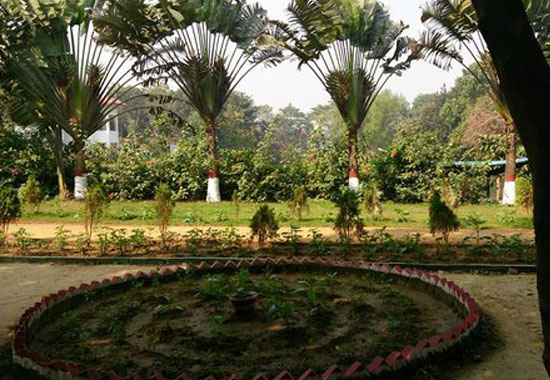
Nearby attractions: The most popular nearby attraction is Amadhpur. It is renowned for the fabulous Zamindar House, its adjacent lake (Dighi), the Thakur Dalan where Durga Puja is held every year, the terracotta temples, few ashrams with 300-year old Banyan trees.
Best visit time: You can visit the place at any time of the year.
Sabuj Bon (Birbhum – 220 km. from kolkata)
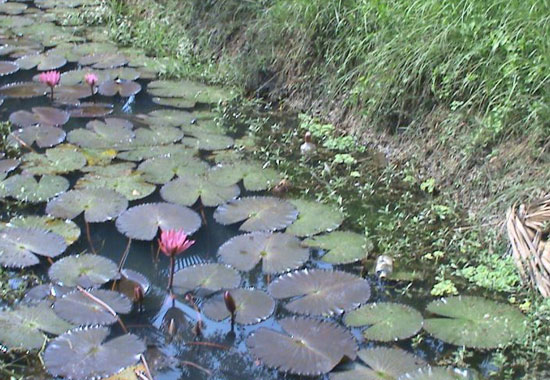
To reach Sabuj Bon from Bolpur (Shantiniketan) station in the vicinity of Vishwa Bharati, embark on a car journey. Upon departing from Bolpur station, take the initial right turn and traverse the railway track. Continue driving for a distance of 12.5 kilometers to reach Sabuj Bon.
Nestled against the picturesque backdrop of the Ajoy river, Sabuj Bon enchants visitors with its lush greenery. Roam through the undulating landscape, taking in the serene surroundings. Take time to identify the diverse array of trees and flowers that grace the region. Noteworthy among them are Nolinas, Cycus, Edenium, Mili, Obesum, Bogenvelia, and Panthapadap. Immerse yourself in the natural beauty of this area, appreciating the rich diversity of flora that enhances the charm of Sabuj Bon.
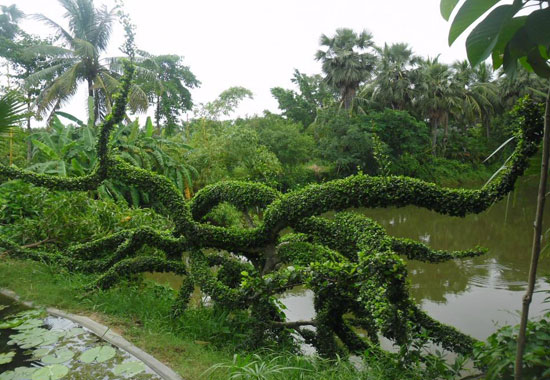
Nearby attractions: If you have some extra time, pay a visit to Shantiniketan to enrich your travel experience.
Best visit time: The best time to visit is the rainy season.
Shantiniketan (Birbhum – 212 km. from kolkata)
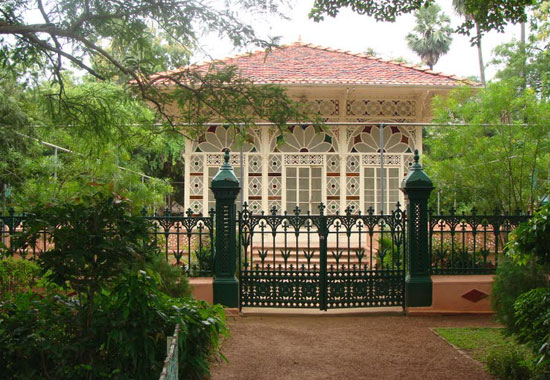
Shantiniketan, situated near Bolpur in West Bengal’s Birbhum district, is a quaint town located approximately 160 kilometers north of Kolkata (formerly Calcutta).
Originally named Bhubandanga after a local dacoit named Bhuban Dakat, the land belonged to the Tagore family. In 1862, Maharshi Devendranath Tagore, during a boat journey to Raipur, encountered a captivating landscape characterized by red soil, lush green paddy fields, and charming rows of chhatim trees and date palms. Captivated by the scene, he decided to plant more saplings and constructed a small house, naming it Shantiniketan, meaning “abode of peace.” Shantiniketan evolved into a spiritual center, inviting people of all religions for meditation and prayers. Maharshi Devendranath Tagore established an ‘Ashram’ here in 1863 and played a pivotal role in initiating the Brahmo Samaj.
Rabindranath Tagore, his son, founded Patha Bhavana, a school based on his ideals, at Shantiniketan. The school’s core principle was that learning in a natural environment would be more enjoyable and productive. Following Rabindranath Tagore’s Nobel Prize win in 1913, the school expanded into a university in 1921. By 1951, it had transformed into one of India’s central universities.
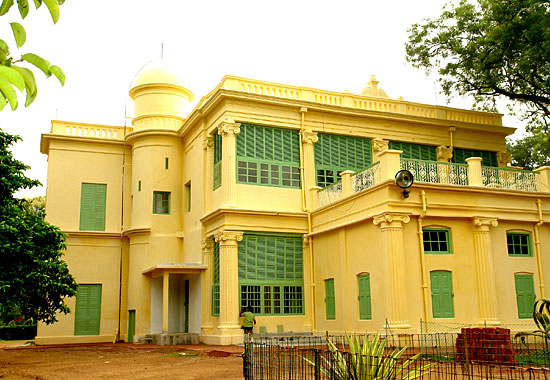
Nearby attractions: Kankalitala, just 9 km from Santiniketan is a temple popular as a Satipeeth. Surul, located near Sriniketan, features temples decorated with terracotta carvings. You can also visit another Satipeeth at Labhpur-Fullara, just 30 km. from Santiniketan. Tourists also visit Nanoor, famous as the birthplace of the Sanskrit poet of the 14th century – Chandidas. Kendubillo is another destination, popular as the hometown of another renowned Sanskrit poet, Jaidev.
Best visit time: You can visit Santiniketan at any time of the year.
Sonajhuri (Birbhum, santiniketan – 165 km. from kolkata)
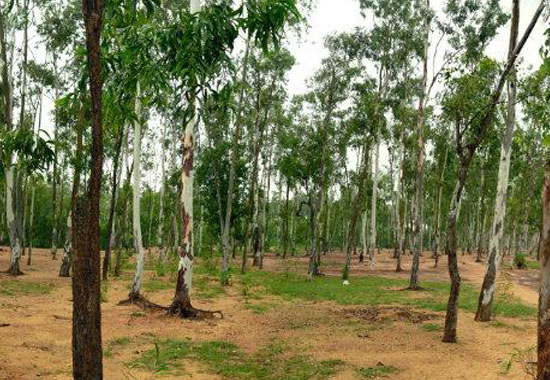
Nestled between the Shyambati Canal and the Sonajhuri jungle, this area boasts abundant greenery and Santhali settlements, providing an ideal escape from the hustle and bustle of city life. The renowned Khoai region, formed by the erosion caused by water and wind, adds to the charm of this serene location.
The highlight of the area is the tranquil Sonajhuri jungle, offering a peaceful ambiance perfect for leisurely strolls. Renowned as one of the cleanest forest areas on earth, it provides a safe environment for children to explore. The Khoai region, featuring canyons sculpted by the forces of wind and water, is a must-visit. The sight of hanging trees and the roots protruding along the edges of these rifts within the forest will undoubtedly captivate and enchant visitors.
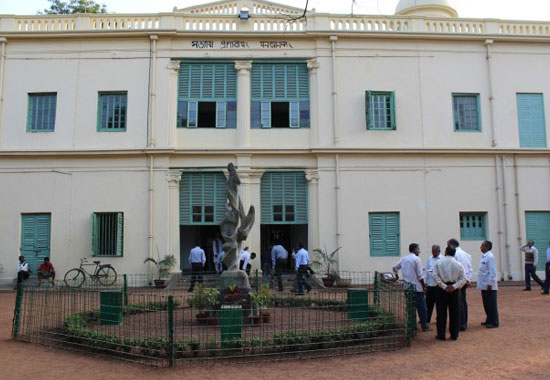
Explore the enchanting surroundings of Sonajhuri, located just a kilometer away from Shantiniketan, Rabindranath Tagore’s “Abode of Peace.” Immerse yourself in a plethora of sightseeing options, including the Vishwa Bharati University campus, Kala Bhawan, Uttarayan, Geetanjali Theatre, Chatimtala, Shantiniketan House, Bichitra Bhawan (Rabindra Museum), and more. Don’t miss the expansive Ballavpur Abhayaranya, a 700-acre Deer Park featuring diverse flora and fauna, complete with a watchtower for panoramic views.
Venture 3 kilometers from Shantiniketan to discover Vishwa Bharti’s Rural Art Centre, an excellent destination for acquiring local artifacts. For handicraft shopping, consider a trip to Sriniketan. Additionally, a brick kiln producing 700,000 bricks is located nearby.
Sonajhuri welcomes visitors throughout the year, but for special events like Basanta Utsav and Poush Mela in Shantiniketan, plan your visit in March and December, respectively. Poush Mela spans from the 7th to the 10th day of the Bengali calendar month of Poush, while Basanta Utsav takes place on the day of Holi.
Supur (Birbhum – 191 km. from kolkata)
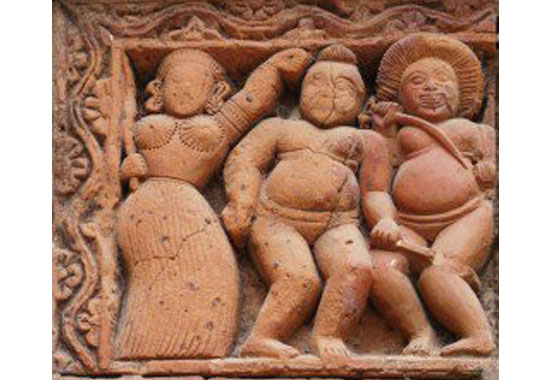
Supur, situated 14 km away from Bolpur, stands out as an ideal weekend retreat, offering a harmonious blend of history and art.
Distinguished as a temple town, Supur boasts remarkable temple sites, with the twin temples in the Lalbazar area being particularly noteworthy. Nestled within a walled complex, these two splendid temples captivate visitors with their exotic architectural style, exemplifying the ‘Rekh deul’ architectural tradition from the Orissan art school. One temple takes the form of an octagon, while the other follows a circular pattern. The octagonal shrine is adorned with extraordinary terracotta panels on all eight sides, featuring intricate carvings that are visually stunning. Notable among them is a captivating carving above the main entrance portraying Radha and Krishna. The panels showcase detailed designs, with one depicting a man riding a lion and a substantial panel at the rear depicting goddess Durga with her family.
Exploring Supur also allows for a visit to the ruins of the Suratheshwar Shiva temple, where remnants of deities, pillars, and archaeological artifacts offer a glimpse into the historical richness of the area.
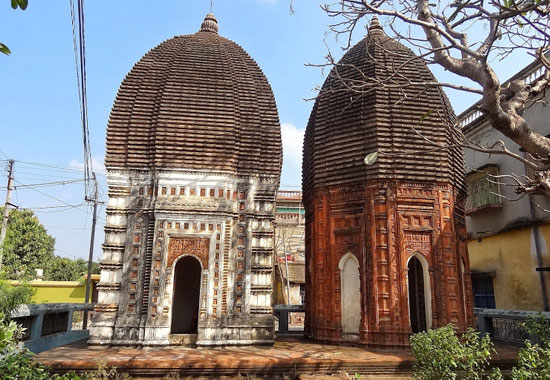
Nearby attractions: You can y organize a tour to Shantiniketan, while making a trip to Supur from Bolpur. Shantiniketan is located at a very close distance from Bolpur. So you can easily hire a car to visit Shantiniketan.
Best visit time: You can visit Supur any time of the year.
Tarapith (Birbhum – 294 km. from kolkata)
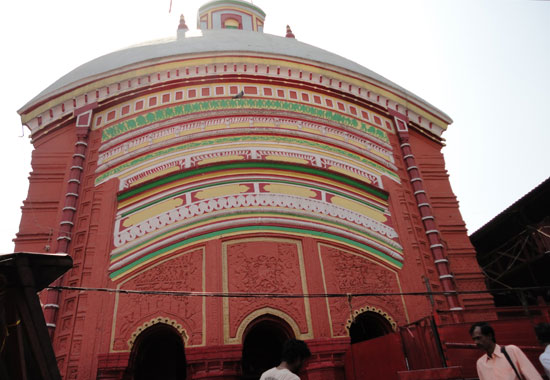
Tarapith, situated near Rampurhat in the Birbhum district of West Bengal, is a quaint temple town renowned for its Tantric temple dedicated to the fearsome aspect of the Devi known as Tara. The town derives its name from being a pivotal center for the worship of Goddess Tara and her cult. The Tantric Hindu temple in Tarapith is a significant hub of Shaktism, attracting devotees who engage in sādhanā, or Tantric rituals, within its premises and the adjoining cremation grounds known as Maha Smashan.
One of the notable figures associated with Tarapith is Sadhak Bamakhepa, often referred to as the “mad saint” or avadhuta. He devoted his life to the worship of Tara Maa and resided in the cremation grounds, leading a mendicant lifestyle. Bamakhepa, under the guidance of the renowned saint Kailashpathi Baba, delved into the practices of yoga and tantric arts, ultimately perfecting them. The ashram of Bamakhepa is situated in close proximity to the Tarapith temple, adding to the spiritual ambiance of the area.
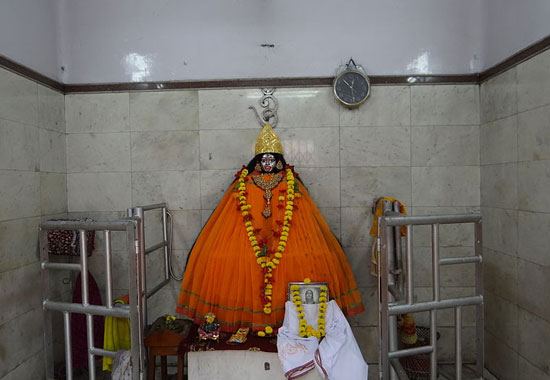
Nearby attractions: The temple town of Tarapith is surrounded by many ancient shrines of Bengal which are equally significant and prominent for their historical and mythical past like Shaktipith in Nalhati and the birthplace of Byamakhapa in Atla village and nearby Gonpur forest.
Best visit time: The temple can always be visited throughout the year.
Tumbani (Birbhum – 260 km. from kolkata)
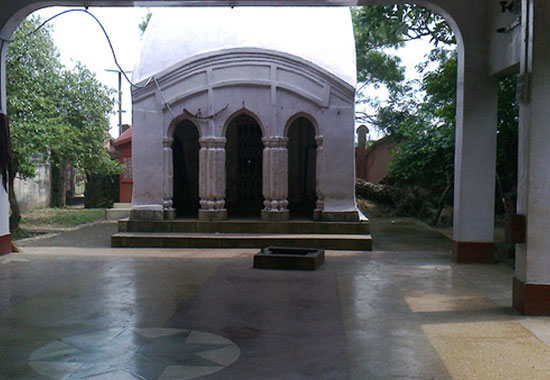
Tumbani, situated at the border of Jharkhand near Rampurhat, offers an ideal weekend getaway. Nestled amidst the Kalipahar forest, Patalpahari village, and the Narayanpur Brahmani River, Tumbani creates a serene ambiance for relaxation. The picturesque setting, surrounded by nature on all sides, invites you to unwind and take leisurely strolls along the riverbanks.
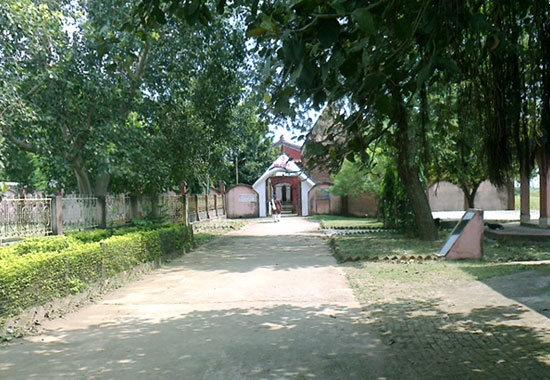
Nearby attractions: You can visit the holy place of Moluti, which is although located in a different state, is quite nearby.
Best visit time: Throughout the year.
108 Shiv Mandir Kalna (Burdwan)

The Nava Kailash, or 108 Shiva Temple Complex, stands as a prominent attraction in Kalna, dating back to its construction in 1809 under the patronage of Maharaja Teja Chandra Bahadhur. This architectural marvel serves as a testament to a significant event—the transfer of the royal estate of Bishnupur.
The temple complex is ingeniously designed with two concentric circles, resembling a rosary, where each bead represents a small temple dedicated to Lord Shiva. Maharaja Teja Chandra’s vision manifested in the outer circle comprising seventy-four temples and the inner circle housing thirty-four, carefully chosen for their mythological and auspicious significance. The meticulous planning of the complex mirrors a spiritual journey, urging visitors to transcend worldly concerns and dedicate themselves entirely to the divine. Notably, the outer circle showcases a blend of white marble and black stone Shiva lingas, symbolizing the duality of the world we inhabit, with half representing virtuous deeds and the other embodying the challenges of life. Meanwhile, the inner circle exclusively features white marble lingas, representing purity and the attainment of divine thoughts through dedicated prayers to Lord Shiva.
The temple walls narrate episodes from the Ramayana and Mahabharata, along with depictions of hunting scenes, offering a rich tapestry of mythology and culture. This unique temple structure encapsulates a profound spiritual message—that true solace can be attained by transcending worldly attachments and wholeheartedly dedicating one’s life to the pursuit of the divine through sincere prayers and meditation.
.
Sarbamangala Mandir (Burdwan)
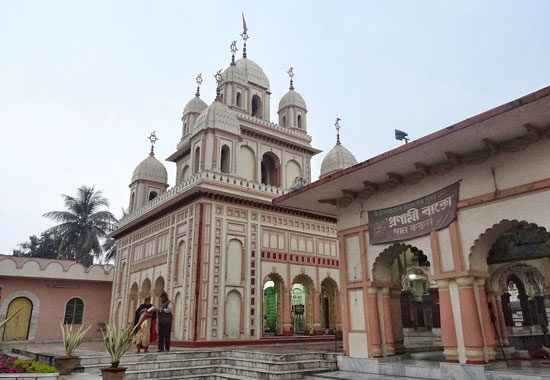
The Sarbamangala Temple, along with the Tarakeswar, Rameswar, Kamalaswar, Chandreswar, and Mitraswar Shib Temples, is a venerable religious institution situated on D.N. Sarkar Road in Burdwan. Maharaja Kirtichand commissioned the construction of the main Sarbamangala Temple with nine spires (NABARATNAS) in the early 18th century, around 1702 A.D. This sacred complex, established nearly 300 years ago, holds immense significance and popularity akin to revered temples such as Kalighat, Dakshineswar, and Tarapith.
The centerpiece of the Sarbamangala Temple is the “MAHIS MARDINI” (Buffalo Killer) idol crafted from black granite stone, depicting the goddess with “EIGHTEEN HANDS” (nine on each side), seated on a lion (SINGHABAHINI). Local legend recounts that the idol was discovered by lime-makers inside a lime kiln, prompting the then Raja to rescue and install it on the bank of the “BANKA RIVER,” a tributary of the Damodar River. The Raja subsequently erected a majestic temple with nine adorned spires, a rare architectural feature with two stories, the first featuring four spires and the second adorned with five.
Facing the Banka River, the temple complex also houses two expansive Shiva temples, Chandaneswar and Indreswar, adorned with terracotta panel decorations. These were constructed by the queens of Raja Chitrasain, as he had no heirs. Mitraswar, a Shiva temple with five pinnacles in the Odissi style, stands opposite the Sarbamangala Temple, dedicated to Mitrasain, the younger brother of Kirtichand. Additional Shiva temples, featuring white marble lingams instead of the traditional black stones, were built in the 19th century by Tejchand, the son of Trilokchand, who succeeded Chitrasain.
In front of the main Sarbamangala Temple, there is a spacious square-shaped “NAT MANDIR,” and the temple complex’s main entrance is marked by a two-story structure with a grand arch gateway facing eastward. Devotees from Burdwan and neighboring districts consider it an honor to seek the blessings of Mata Sarbamangala, reinforcing the temple’s prominence in the region.
Burdwan University Golapbag Campus (Burdwan)
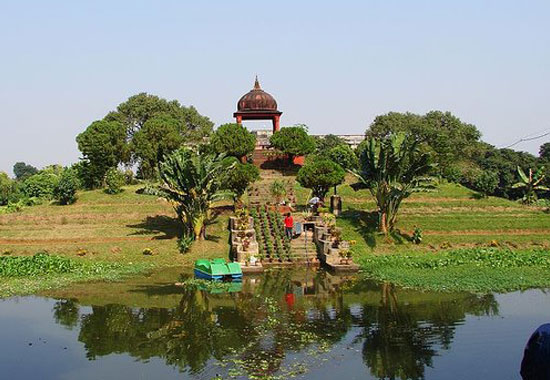
Golap Bag, known as the Garden of Roses, in Bardhaman is a beloved destination for tourists. Established in 1884 by King Bijoy Chand Mahatab, it serves as both a Botanical and Zoological garden. The renowned botanist Dalton Hooker visited this site and documented 128 types of trees. Presently, the garden boasts an array of mango, casuarina, eucalyptus, jaam, and shimul trees. Additionally, the University of Bardhaman conducts classes within the complex. Situated approximately two and a half kilometers from the railway station, Golap Bag is a major tourist attraction in the area.
Burdwan Deer Park (Burdwan)

Burdwan’s Deer Park stands out as a designated forest reserve, renowned for its abundant deer population. The park boasts not only deer but also serves as a habitat for tigers and a diverse array of vibrant birds, enhancing the overall allure of the location. Additionally, the conclusion of the reserve forest serves as the final resting place of King Bijoy Chand Mahatab, the visionary founder of the enchanting Garden of Rose, also known as Golapbag. Visitors have the opportunity to arrange a comfortable overnight stay in a guest house within the premises with prior arrangements
Burdwan Meghanath Saha Planetarium (Burdwan)
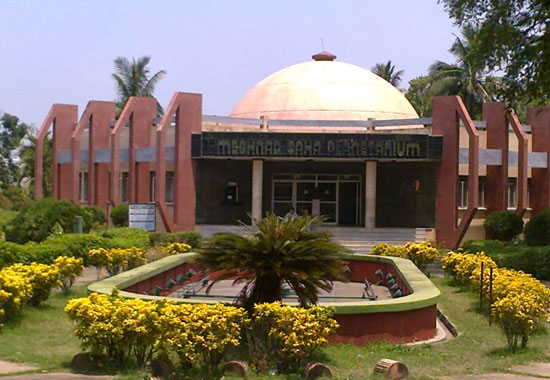
The Meghnad Saha Planetarium, named in honor of India’s renowned scientist Meghnad Saha, was constructed with the assistance of the esteemed Japanese optical manufacturing company, Goto. Situated on a 5.1-acre plot provided by Burdwan University, the planetarium was established through collaborative efforts from the Government of India, Japan, and contributions from the general public. This facility, inaugurated in 1994, showcases automated exhibitions on topics such as the Earth’s revolution, the solar system, and more. Notably, it is the second planetarium in the state of West Bengal, following Kolkata’s “Birla Planetarium,” and hosts regular shows for visitors.
Burdwan Science City (Burdwan)
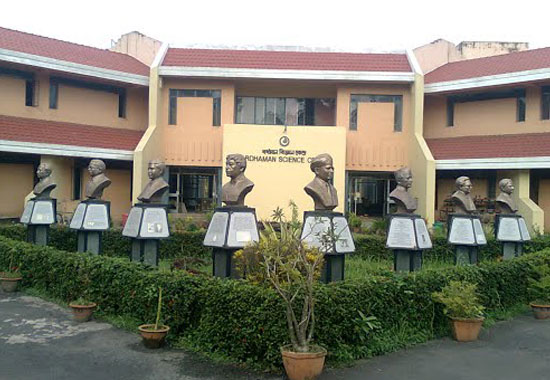
The Science Center, located on Golapbag Road near Burdwan University, is home to a science museum and a park. Visitors can explore exhibits on various aspects of science, gaining insights into the animal kingdom, the environment, and more. The Burdwan Science Centre offers a wealth of scientific information through engaging displays. Visitors can participate in interactive activities such as the game of moving balloons and balls, witness the magic of chemistry, unravel the secrets behind flying objects, and much more.
Beyond exhibits, the Science Centre hosts discussion sessions and computer training programs. This institution is the result of collaborative efforts between the Central Government, the Government of West Bengal, and the University of Burdwan.
Krishna Sayar Park Burdwan (Burdwan)
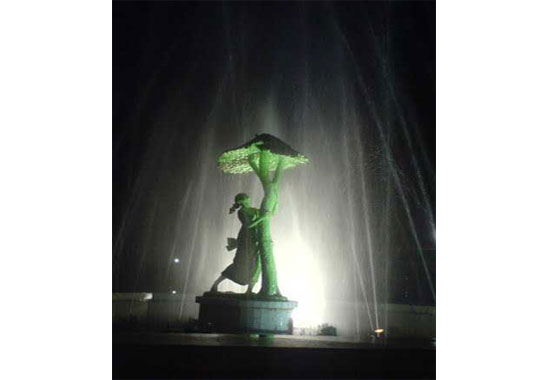
Krishnasayar, originally constructed as a substantial lake in 1691 by the monarch of Bardhaman, spans an expansive 33-acre area. Initially encircled by a substantial bank, remnants of which exist sporadically today, Krishnasayar has undergone transformation into a park, gaining popularity for recreational activities such as boating and sightseeing.
This park serves as the venue for a state-level dance festival held during the Holi season, accompanied by a ten-day fair showcasing local handicrafts starting from January 1st. The fair features diverse events like art exhibitions, flower displays, poetry and story reading competitions, and folk song contests. Additionally, the park boasts an aquarium.
Situated within Krishnasayar, Burdwan, the Eco Park stands out as a premier destination, offering a breathtaking scenic view. The park’s focal point is a vast lake enveloped by trees, creating a captivating ambiance. Open from morning until evening, the park requires an entry ticket but provides a rejuvenating retreat for both adults and children. The cool breeze from the lake enhances the experience, making it a refreshing and enjoyable place to visit.
Siddheswar Temple Katwa (Burdwan)
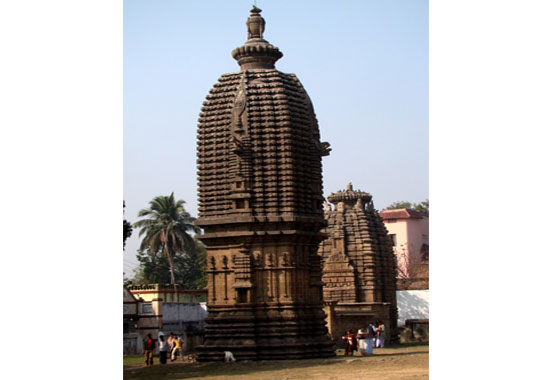
Temple No. 5, also known as the Siddheshvara Temple, located in Barakar, Burdwan district, was documented by J.D. Beglar in 1872-73. In his observations, Beglar noted that Barakar housed several intriguing ancient remnants in remarkably well-preserved condition. Temple No. 5 is comprised of a sanctum (cell) and an antarala (vestibule), with no apparent historical evidence of a mahamandapa in front. The central object of worship within the temple is a lingam, placed within a sizable argha measuring 4 feet 7 inches in diameter.
Additionally, scattered both inside and outside the temple are various statues and fragments. Among these artifacts are representations of Ganeca, a 4-armed female figure, and a 4-armed male holding a sword and a trident in two hands. The temple also houses miscellaneous fragments of statues. Beglar’s detailed account provides valuable insights into the religious and artistic aspects of Temple No. 5 in Barakar.
Ichai Ghosh Temple Katwa (Burdwan)
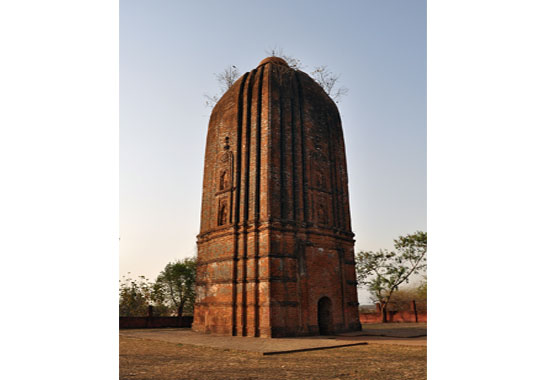
The structure known as the ‘Temple of Ichhai Ghosh’ or ‘Ichhai Ghosher Deul’ in the local Bengali language lacks any discernible representation of a deity. Situated along the banks of the river Ajay in the current Bardhaman district of West Bengal, it is believed to have been constructed during the 7th century AD by Ichhai Ghosh. A formidable leader and a revered figure among the local milkman community, Ichhai Ghosh not only challenged but triumphed over the reigning king of Gour (Bengal) in a decisive battle. Following his victory, he declared himself the ruler of the ‘Trishasthi’ or ‘Dhekur’ region within the state of Gour.
The monument, presumably erected to commemorate his triumph over the Gour king, or possibly dedicated as a temple to the goddess ‘Mother Shyamarupa,’ displays no remaining signs of its original purpose. Despite Ichhai Ghosh’s unwavering devotion to the deity, no visible trace has endured over time. This historical episode is also recounted in the epic ‘Dharmamangal,’ a part of the ‘History of Bengali Literature.’
Joydev-Kenduli:
Believed to be the birthplace of the poet Jayadeva, this area hosts the Kenduli Mela, a traditional fair celebrating the region’s cultural heritage.

